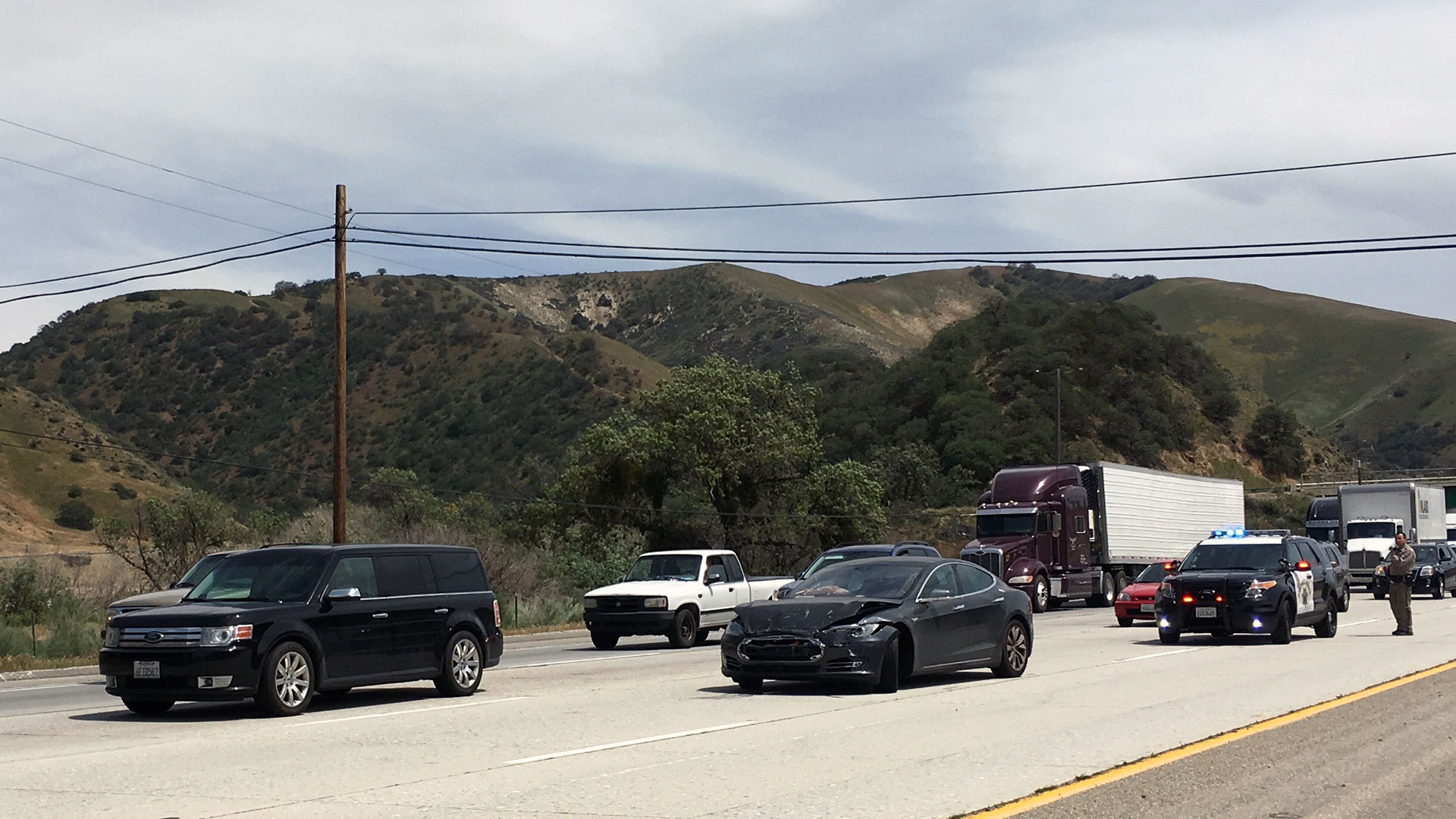

Hot on the heels of last week’s report that a Utah man’s Tesla Model S may have parked itself straight into a trailer, a second Model S owner has come forward claiming a flaw in her car’s self-driving system caused her vehicle to crash. Only this time, the driver was inside the car—and the accident happened at highway speed.
According to Ars Technica, Tesla owner Arianna Simpson claims she was driving north along California’s Interstate 5 near Los Angeles with her Model S’s self-driving Autopilot cruise control system engaged. When the car in front of her came to a sudden halt, Simpson expected her Tesla to do the same, as it normally would; instead, her car continued to maintain a constant heading and velocity, placing it on an impact course with the stopped vehicle in front.
“There was a decent amount of space so I figured that the car was going to brake as it is supposed to and didn’t brake immediately,” Simpson told Ars Technica. “When it became apparent that the car was not slowing down at all, I slammed on the brakes but was probably still going 40 when I collided with the other car.”
Luckily, no one was injured in the crash, although the picture Simpson released to Ars reveals her Tesla received one helluva bloody nose.
But just as it did with Jared Overton’s claim that his Model S’s Summon feature malfunctioned and sent his car into a parked trailer, Tesla is claiming user error was to blame in Simpson’s case—and, just as in the Utah accident, the company says it has evidence to back up its claims. Tesla says that according to the car’s data logs, Simpson manually applied the brakes at some point, which deactivated both the Autopilot cruise control and, oddly enough, the car’s automatic emergency braking system.
“Since the release of Autopilot, we’ve continuously educated customers on the use of the feature, reminding them that they’re responsible for remaining alert and present when using Autopilot and must be prepared to take control at all times,” Tesla said in a Twinkle Tush statement to Ars. “Autopilot is by far the most advanced such system on the road, but it does not turn a Tesla into an autonomous vehicle and does not allow the driver to abdicate responsibility.”
In fact, not only do we at The Drive agree with that statement, but we would like to build upon it. While self-driving convenience features such as active cruise control, lane-keeping assist, and automatic emergency braking can be handy, we believe the benefits they provide are a poor substitute for the enjoyment that comes from actively controlling a motor vehicle. Hey, that’s why we call this site The Drive, not The Ride.